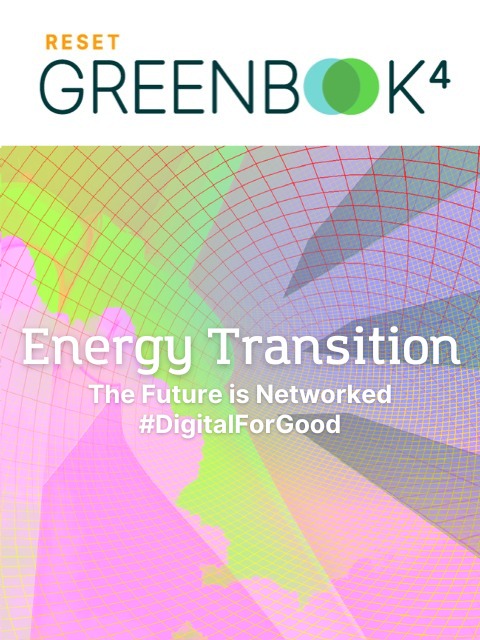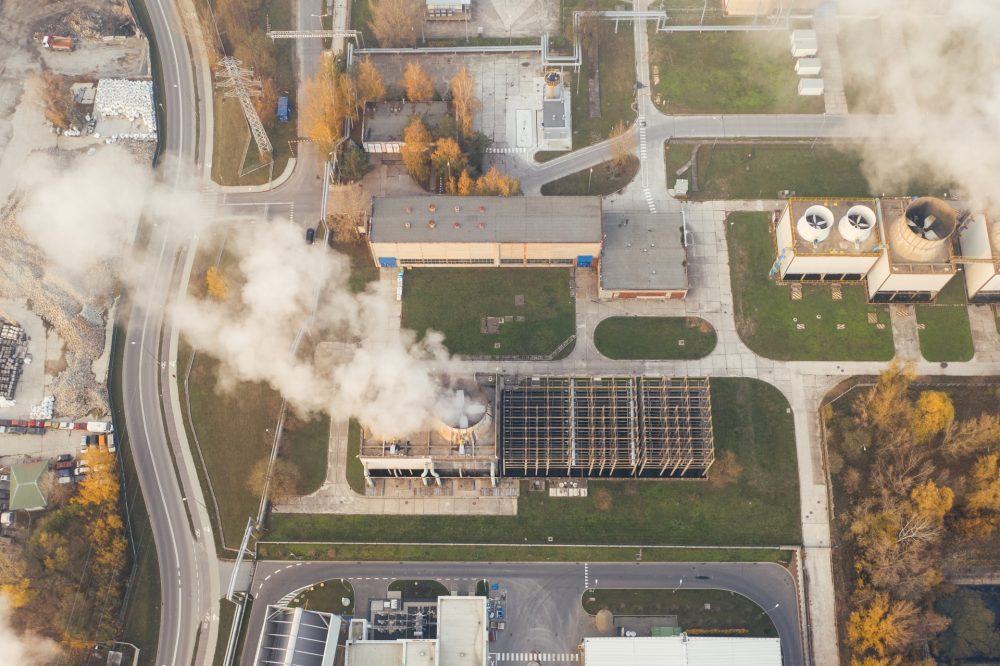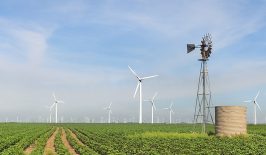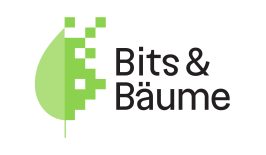RESET: The energy sector and industry account for the largest share of global CO2 emissions, right?
Grischa Beier: Yes, the manufacturing industry, which we mainly research, is currently responsible for about a quarter of all greenhouse gas emissions. In 2019, it was 27 per cent in Germany. In terms of energy consumption, we are in similar dimensions. So, the latest figures we have are around 26 percent of Germany’s total final energy consumption, with primary energy consumption even higher.

Grischa Beier has been researching the effects of digitalisation on industry for eight years at the Institute for Transformative Sustainability Research IASS in Potsdam.
Among other things, he heads the research group “Digitisation and Transformation for Sustainability” here, which focuses on the effects of digitisation on industrial sustainability, global value chains and international cooperation.
Where do the high CO2 emissions come from?
If you look at the sectors that consume a particularly large amount of energy, it is specifically the chemical industry on the one hand, but also the metal and mineral oil industries. What these three sectors have in common is that they operate a relatively large number of thermal processes. These are processes or a class of processes that are very energy-intensive because large quantities of raw materials or intermediate products have to be heated or cooled down considerably.
How such thermal processes can be meaningfully combined with the existing weak points of renewable energy systems is, however, also a starting point that, to my knowledge, is already being well researched. For example, by using heating processes to store energy. If metallic materials have to be heated, the slag can be heated more than is actually necessary if there is a lot of renewable electricity in the energy system. In this way, the metal can be allowed to cool for a certain period of time when energy is in short supply.
But is this actually being implemented on a larger scale?
There are larger companies that are already doing this to some extent; aluminium smelters or steel-producing companies come to mind. I also believe that there are already processes in the concrete industry.
But that is not my core competence. The topic of Industry 4.0, which is my research focus, is more concerned with the metal processing industry. That is, when the semi-finished metal products are already produced and delivered to the large companies, where they are then processed into the products that we can later buy in the shops.
If we want to achieve the climate targets, emissions in industry must be massively reduced. What role does digitalisation play in this?
There are essentially two paradigms that, in my view, can help reduce emissions in industry. The first paradigm is resource efficiency, i.e. the question: How can I make my product with as little energy and other resources as possible? And the second big paradigm is decarbonisation. So, how can the energy I need then come from renewable energy sources so that I don’t create new emissions with it?
With regard to the first paradigm – efficiency – there are different approaches. On the one hand, there is material efficiency. There are approaches to better tailor supply to demand. Digital tools can help here, of course, because they are good at recording what is actually needed and then simulating how much of certain materials are needed.
I remember an event when the concept of Industry 4.0 was perhaps three or four years old. One of the intellectual fathers of this concept said at the time that, from his point of view, this approach of better matching supply and demand would bring about a 30 percent saving in resources. However, when I talk to representatives from the field now, this is more of a marginal aspect. In my estimation, the industry uses the technological possibilities more to be able to record specific customer wishes, but not to find out concretely how many washing machines of this type I have to produce and then to stop production when exactly this last required washing machine has been produced. I think the processes are still rather static.
But there are certainly promising digital solutions in Industry 4.0, aren’t there?
Yes, another approach to saving material is of course improved maintainability and support through digital technologies. For example, it can be better recorded when machines reach a critical state in which they urgently need to be serviced. And I can use it to prevent things from being severely damaged, which then have to be repaired in a costly and material-intensive manner. Of course, I can also use digital technologies to ensure that the specialists who have a certain expertise to carry out this maintenance can also communicate remotely with the workers in the factory so that they can carry out certain activities themselves.
Predictive Maintenance
Predictive maintenance means that information about the condition of the machines is obtained on the basis of process and machine data, so that deviations, wear and irregularities can be detected before major repairs are necessary. For this purpose, sensor data is analysed in real time and often processed with the help of artificial intelligence and forecasts are created.
With regard to energy efficiency, I also see interesting starting points through digital technologies. On the one hand, there is demand response management: at times when a lot of renewable energy is available due to sun and wind, production is increased. And on the other hand, production processes can be shut down at times when energy is scarce. In this way, less energy is wasted and the available energy is used optimally.
A second point is sector coupling. This means that the energy that is available in one sector of industry can be absorbed in the other. If we imagine that we live in a future where electromobility is no longer a marginal phenomenon and millions of electric vehicles are connected to the power grid, then that is of course an incredibly large energy store that can be used when a lot of energy is available. And of course you can do the same with other industries that have energy storage potential, such as the metallic smelters already mentioned.
In terms of resource efficiency and using fewer materials, the circular economy is of course also a very exciting approach. Here, for example, digital technologies can help all processing companies involved in a value chain to jointly create and maintain a transparent overview of which materials are used in a particular product, so that they can later reprocess or recycle them or put certain parts of a product to secondary use.
Which digital tools are used in the Circular Economy?
Digital identifiers are particularly relevant in the Circular Economy example. With complex machines like aeroplanes or automobiles, there are tens of thousands of components that I assemble, in aeroplanes even millions. And especially if you now have small electronic components, it is enormously difficult to ever take them apart again. And if I don’t know which material is where and to what extent, I naturally can’t make it usable for the recycling industry.
I first have to create this transparency before I can even set up different approaches like reverse logistics, recycling, upcycling or a secondary market. That’s often not where we are today. But I think that’s the central crux of what digital technologies can do for the circular economy.
Reverse Logistics
The concept of return logistics turns linearly organised supply chains into reusable systems or, even better, closed product cycles. For this purpose, goods are routed back towards the source after their “first life” in customer hands in order to be recycled. This also increases resource efficiency. When the product cycle closes, this is called closed-loop supply chains. Digital processes can promote development, for example by using artificial intelligence to support efficient disassembly.
How do digital technologies create this transparency?
Digital technologies have to bridge the gap between the knowledge of what is built into a certain product and the question of which concrete artefact I am currently holding in my hand. The knowledge of what is built into a particular product usually lies in a proprietary IT system of the manufacturing company. Alternatively, one could also label the individual components of a product with a digital identification tool, for example an RFID chip, which says that this RFID identifier belongs to such and such a component, is made of such and such a material, has such and such properties. Of course, this would require a uniform labelling system.
This can then also make the entire supply chain visible, can’t it?
Exactly, that is also a very important point. From my point of view, it is not so much about enabling a circular economy, but about tracking the actual environmental and social impact of a product along the entire supply chain and thus making it transparent. Ideally, from the company that ultimately sells the product to the company that is already active in the mining sector, so to speak. This is actually one of the central concerns of the Supply Chain Act, that all environmentally relevant information throughout the entire value chain is tracked and made visible.
Supply Chain Act
The German Supply Chain Act, which comes into force in January 2023, imposes human rights due diligence obligations on companies based in Germany that they must observe within their supply chains. Accordingly, they must ensure compliance with human rights along the entire supply chain.
Environmental protection is also included in the law if environmental risks lead to human rights violations. Comprehensive information can be found here.
However, this is currently still an enormous challenge. In the electronics industry in particular, it is very often claimed that the products are so complex and the supply chains so long that it is impossible to trace them. I understand that this is difficult. But I don’t understand why it should be impossible. Of course, digital technologies are of elementary importance to enable this traceability throughout the entire chain.
One and a half years ago, we conducted a large interview study in the electronics industry. Exaggeratedly speaking, at that time digital technologies were really only there to send an e-mail from A to B. But what was new about the Industry 4.0 concept was that data was linked and correlated across the entire value chain and that digital technologies were then used to derive new design options from this information.
But I think that if it is prescribed by law – and we are on this path now – then it is a very good tool to really link the entire chain with information technology and to make it transparent.
I have read in many studies that digitalisation can save CO2, but that this effect is usually cancelled out by rebound effects, for example. This means that companies immediately reinvest what they save in their own growth. There is also the fact that digital technologies themselves have a high energy consumption.
I think that is a very important point. You always have to be aware: Every process that I digitise requires a high investment in materials and energy. I install sensors, I need processors, I need data lines. Or if I send the information over the air, it becomes even more energy-intensive. But I think that if I’m smart about it and try to really make my processes more energy-efficient, then I can end up using less energy. But it should never be misunderstood as an end in itself.
Nevertheless, I actually read the statistics in such a way that there are very strong efficiency gains in the area of data management (i.e. the large server parks), where the volume of data has increased enormously, since energy consumption has nevertheless only increased very moderately or even remained constant in the last decades. I suspect that the increasing use of digital technologies and services does not necessarily mean that we end up consuming more energy when we collect and manage more data.
And it’s probably similar for industry. Energy consumption remains relatively constant over the years, even though the output – what is produced – is actually increasing. The conclusion for me is that the processes become more efficient. But I can make industry as efficient as I want, if there is no end to more production, the overall systemic effects will remain manageable.

The 1.5 degree target is unattainable without a real transformation of our energy system. But how can it succeed? What are the energy sources of the future? What digital solutions are ready and where are innovations needed? And how can the transformation be driven forward?
The RESET Greenbook “Energy Transition – The Future is Networked” presents digital, innovative solutions and sheds light on the background.
But what is the actual state of affairs; are there actually already relevant savings through digitalisation in industry?
That is indeed a question that has not yet been conclusively clarified in research. But according to my perception, there are individual very good examples where really relevant savings have been achieved.
I can give two examples. There was a large European research project in the automotive industry. Through cooperation between car manufacturers, research institutes and robot manufacturers, it was possible to optimise the robot fleets in the production of cars in such a way that they no longer carry out their activities as quickly as possible, as was previously the standard, but as energy-efficiently as possible. Energy savings of up to 30 per cent have been achieved for these robot fleets as a result.
A second example comes from the field of aircraft construction. There, 3D printing processes were used to produce certain parts of turbines that now have a very complex geometry, but which could be built very easily using this specific process. And that is of course particularly interesting in aircraft construction, because the parts fly through the air for 20 years and for every kilo that I have to transport more through the air, I also consume more energy.
In my perception, however, such approaches are not yet being used on a broad scale, but rather as individual anecdotal examples that do not yet have any major systemic effects.
Why is that?
It’s because digital technologies are primarily used to improve the classic performance categories. So, I want to become more efficient, that is, I want to produce more in less time. I might also want to use less material for it, because that costs money. But the essential parameters are still time and output quantities, and these are the main parameters for optimisation in industry today.
I think that as long as we don’t create a legal framework that simply prescribes ecological, sustainable production methods, it will probably be difficult for the broad mass of companies to change fundamentally. But such a fundamental change is necessary, in my opinion, if we really want to manage to get close to climate neutrality in the next ten or 20 years.
So creating these framework conditions is primarily a political task?
In my opinion, yes. It should not be left to the companies alone to carry out this transformation at a speed that is comfortable for them, but a path should be shown through clear specifications by when these companies must produce sustainably. And at the same time, it should also be made transparent for consumers which products and which companies are sustainable and how, so that more conscious decisions are made possible in the first place.
The non-financial reporting requirements for the smaller companies are also not popular. But once these are imposed, they will become established and will help us all to better understand how quickly this transformation is actually taking place, so that we can then take timely action.
This means, however, that at the moment we do not yet have an appropriate framework that puts us on the path towards climate neutrality in industry.
I would agree that we are still a long way from reaching our goal, but there have certainly been policies and laws in the recent past that are a very good first step. I would mention, for example, the BMBF’s Action Plan for Sustainable Digitalisation from 2019 or the BMU’s Digital Agenda from 2020. But also at the European level, there is, for example, the White Paper on Artificial Intelligence and, of course, the European Green Deal from 2020, which outline very good visions, as well as the EU’s digital product passport for electronic products and also the German Supply Chain Act.
Digitaler Produktpass
The digital product passport refers to a data set in which all information about the components and materials, the reparability or proper disposal of a product is summarised.
By having all environmentally relevant data available in a standardised format, all actors along the value and supply chain should be able to work together towards a circular economy. At the same time, the digital product passport should also provide reliable consumer information. Further information: Digital product passports are the key to climate-friendly decisions
The debate is currently also about how to make big data centres greener or how to contain the consumption of AI. What is important to me, and what I think is increasingly being noticed, is that different groups of actors are increasingly being involved in these processes. In other words, these famous transdisciplinary approaches, in which not only the economy or research is questioned, but that an attempt is made to enter into dialogue with all the groups of actors involved in order to really get a comprehensive picture of the problem. And I would like to see this dialogue not only in the development of guidelines, but also to see how we can accompany them in the medium term in order to continuously adjust and improve them.
We still have seven years to turn the tide and really make massive cuts in emissions. Isn’t all this still just a drop in the ocean?
I find that difficult to judge, because I can’t estimate exactly what the effects of these still fairly new regulations will be. I would go out on a limb and say: If we only handle it like this in the EU, then it will pretty definitely not be enough. But I think the first drop is necessary to make progress. However, it should not be the only one. And I think that we should first assess what the concrete effects will be in the end. In addition, one should work intensively in parallel in international organisations to ensure that these or similarly effective approaches are adopted in many regions of the world.
So can industry really ever become climate neutral?
That is a very big question. I think it’s utopian with the approaches that are already being implemented today. But when the energy system has switched completely to renewable energies, at least for electrical energy, that would be a very good first step. Then, of course, a lot of thermal energy will still be needed in industry. We have to find innovative approaches to ensure that thermal energy is also sufficient for industry so that we don’t have to burn fossil fuels. And an important point is, of course, the reusability of materials. If I don’t manage to recycle a large part of the materials, climate neutrality is difficult to achieve.
Certain products can be recycled more often than others, but there is no material that can be reused infinitely often. We simply have to become as good as we physically can. And for the remaining energy consumption and emissions, we have to find mechanisms to deal with them as well as possible.
But it is also certain that a certain social awareness of the concept of sufficiency must emerge. I think that as long as we still live in a cultural environment where everyone wants to own as much as possible, it will be relatively difficult to achieve climate neutrality. But this is not just a challenge for digital technologies, it is a cultural, overall social responsibility to which we can and should all contribute.










